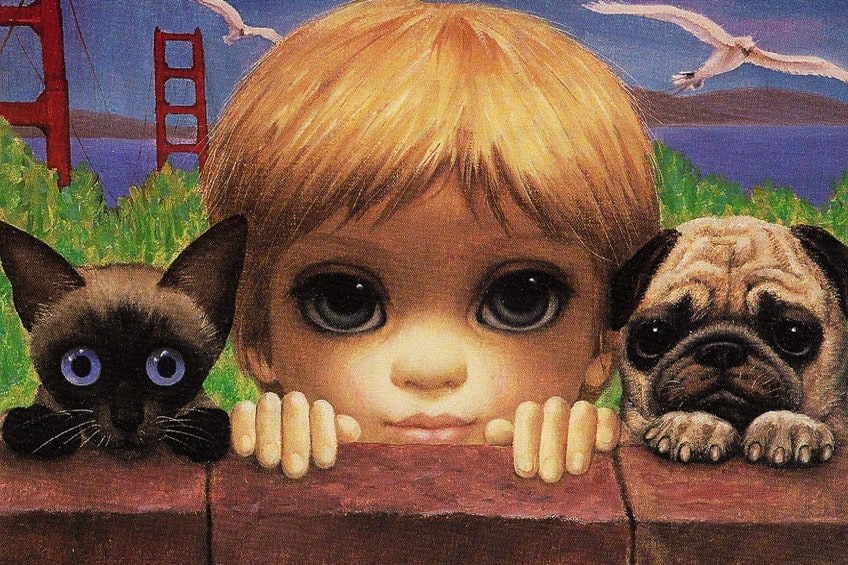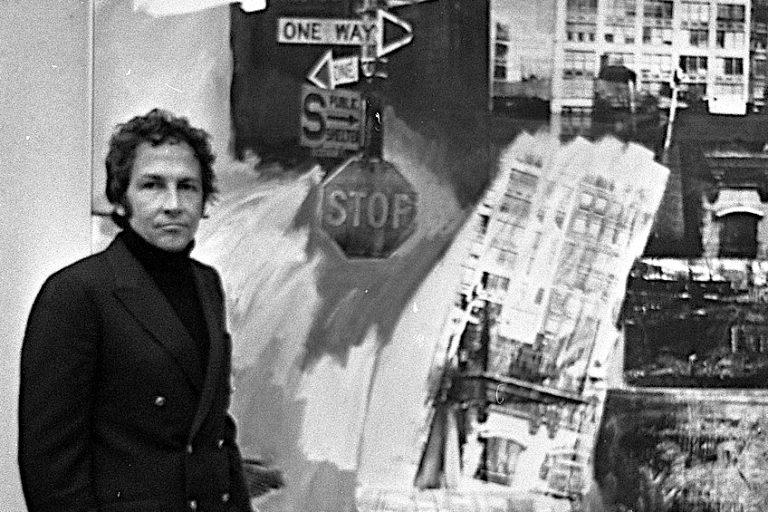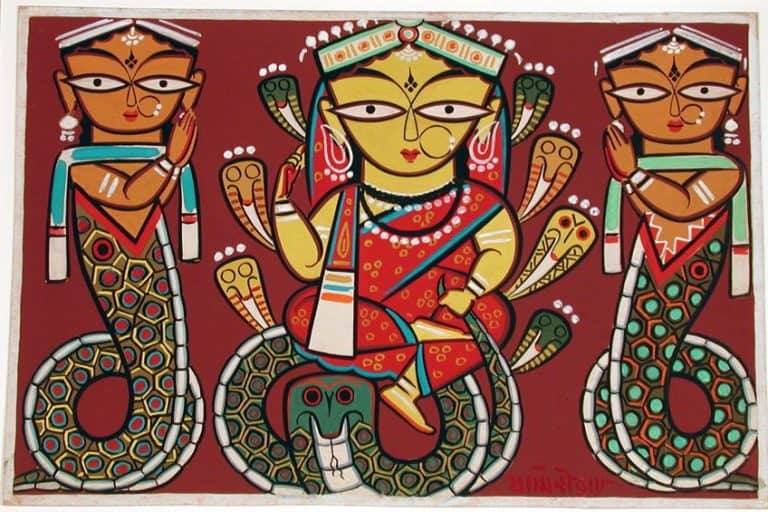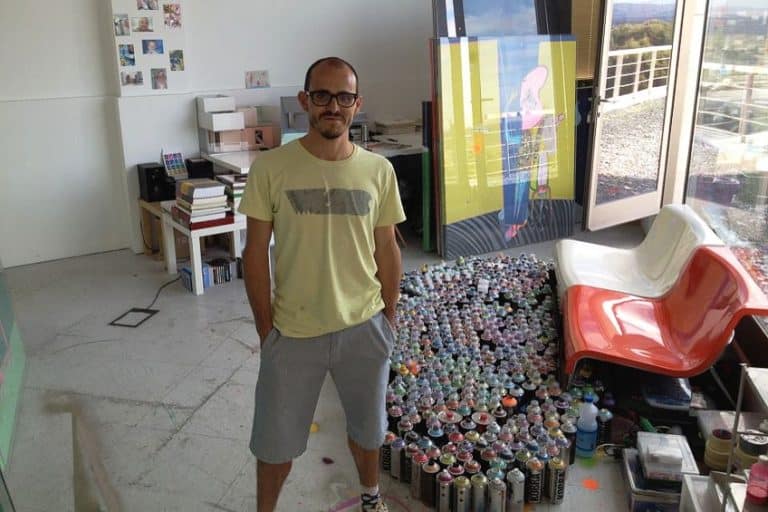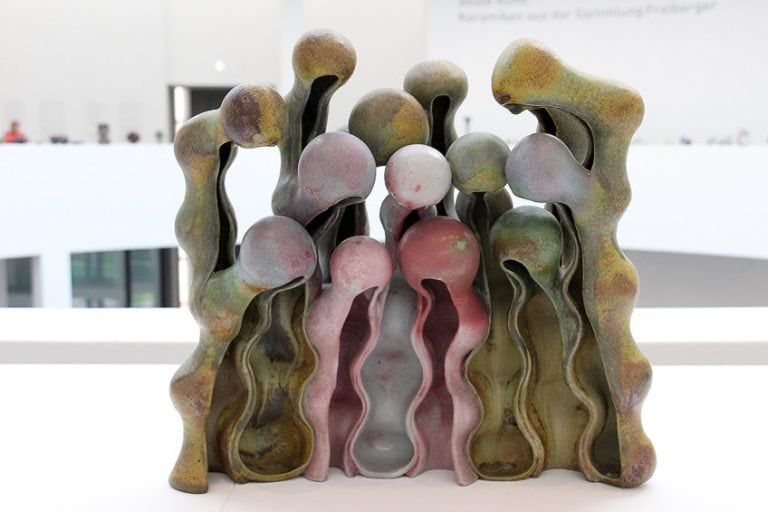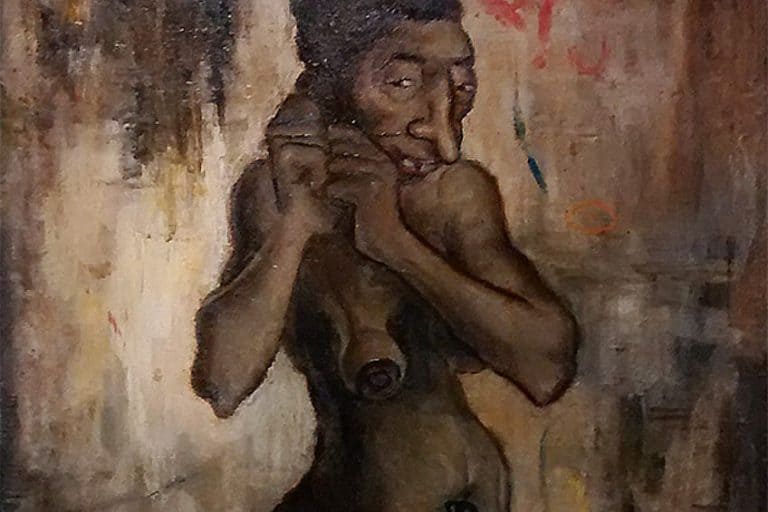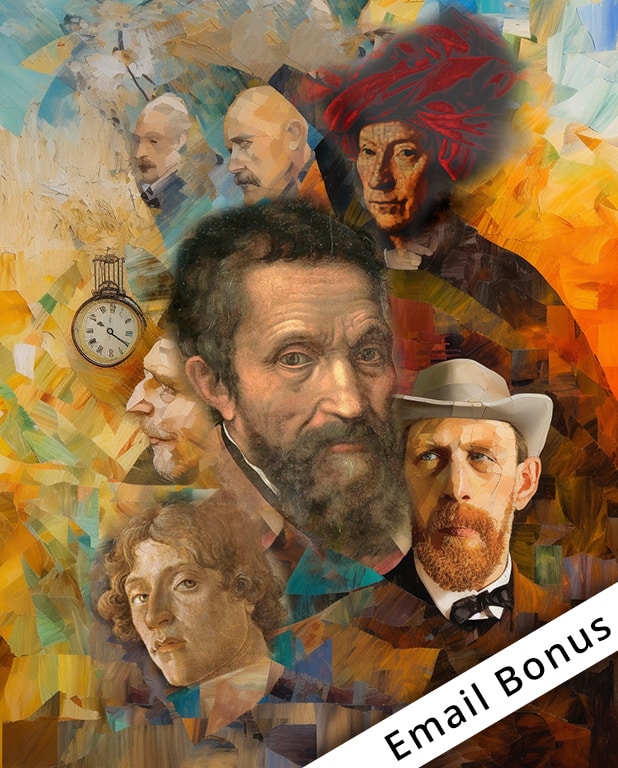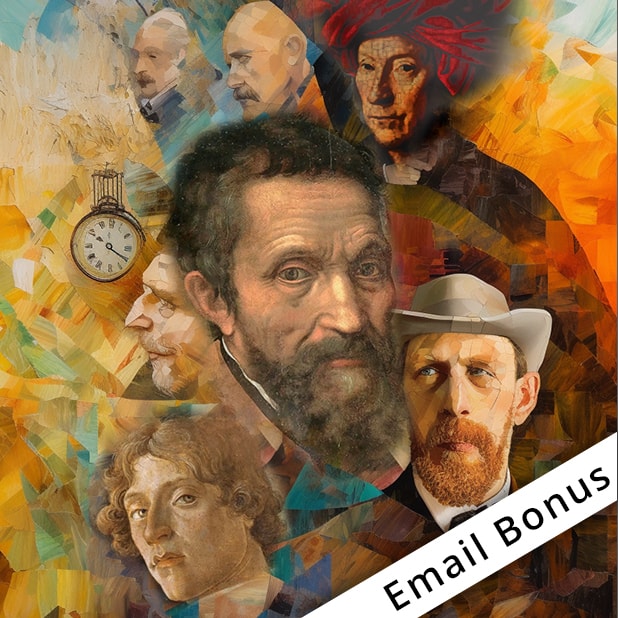Margaret Keane – The Painter Behind the Big-Eyed Portraits
Margaret Keane was a painter from America who was well known for her portraits of people with large eyes. The big eyes paintings by Margaret Keane were mostly of animals, children, or women, and were produced in mixed media or oils. Margaret Keane’s paintings were commercially successful due to low-cost replications on plates, prints, and mugs. Today, we shall be taking a look at Margaret Keane’s biography and artworks.
Margaret Keane’s Biography
| Nationality | American |
| Date of Birth | 15 September 1927 |
| Date of Death | 26 June 2022 |
| Place of Birth | Nashville, Tennessee, United States |
Margaret Keane’s paintings have received critical acclaim, yet they have also been derided as predictable and cliché. Initially, the artworks were ascribed to Walter Keane, Margaret Keane’s ex-husband. Margaret Keane swiftly claimed credit following their divorce in the 1960s, which was proven after a judicial “paint-off” in Hawaii.
Following the publication of Tim Burton’s biopic Big Eyes (2014), there was renewed interest in Margaret Keane’s paintings.
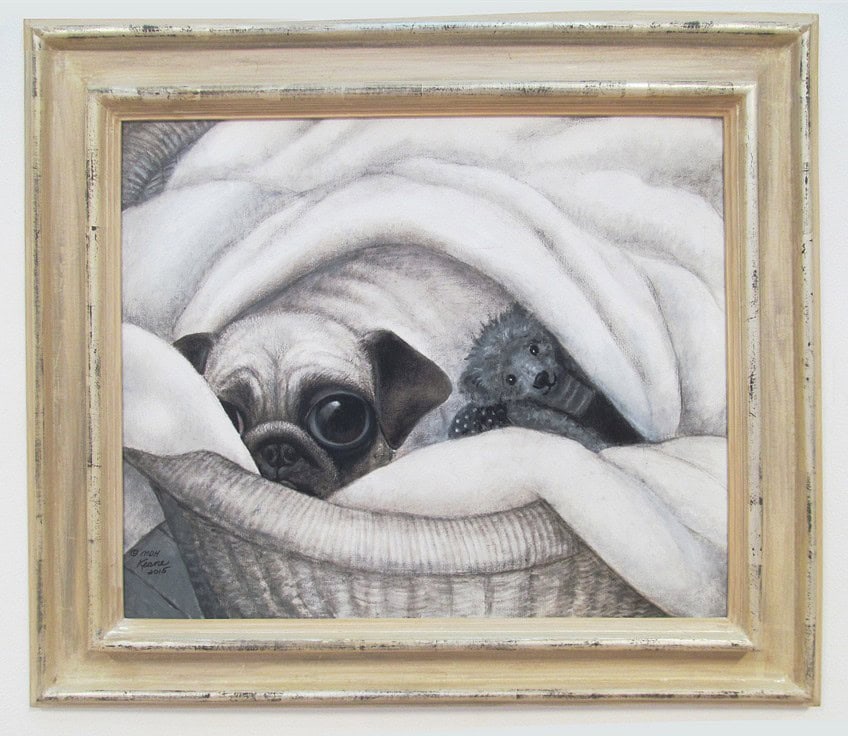
She managed a gallery in San Francisco that boasted “the world’s greatest collection of Margaret Keane’s paintings”. Because of the wide disparity between her work’s public appeal and critical condemnation, she was dubbed the “Wayne Newton of the art world”.
Early Life
Margaret Keane’s eardrum was permanently injured during a mastoid procedure when she was only two years old. She learned to comprehend people by looking at their eyes and mouth because she couldn’t hear them correctly. Her brother David and she attended public schools. Keane began sketching as a toddler and, at the age of 10, enrolled in studies at Nashville’s Watkins Institute.
That same year, she produced her first oil painting of two tiny children, one sobbing and the other smiling, and handed it to her grandma.
She spent a year at New York City’s Traphagen School of Design when she was 18 years old. In the 1950s, she started to paint garments and baby cots before transitioning to portraiture. Keane began dabbling in kitsch early on. She painted with oil and acrylic paints, and her subjects were limited to children, women, and common animals such as dogs, cats, and horses.
Career
The artist, at the time a married woman with a baby, met Walter Keane in the mid-1950s. When Walter Keane was at the peak of his career, he noticed her eating alone at a well-known North Beach café and was drawn to her wide eyes.
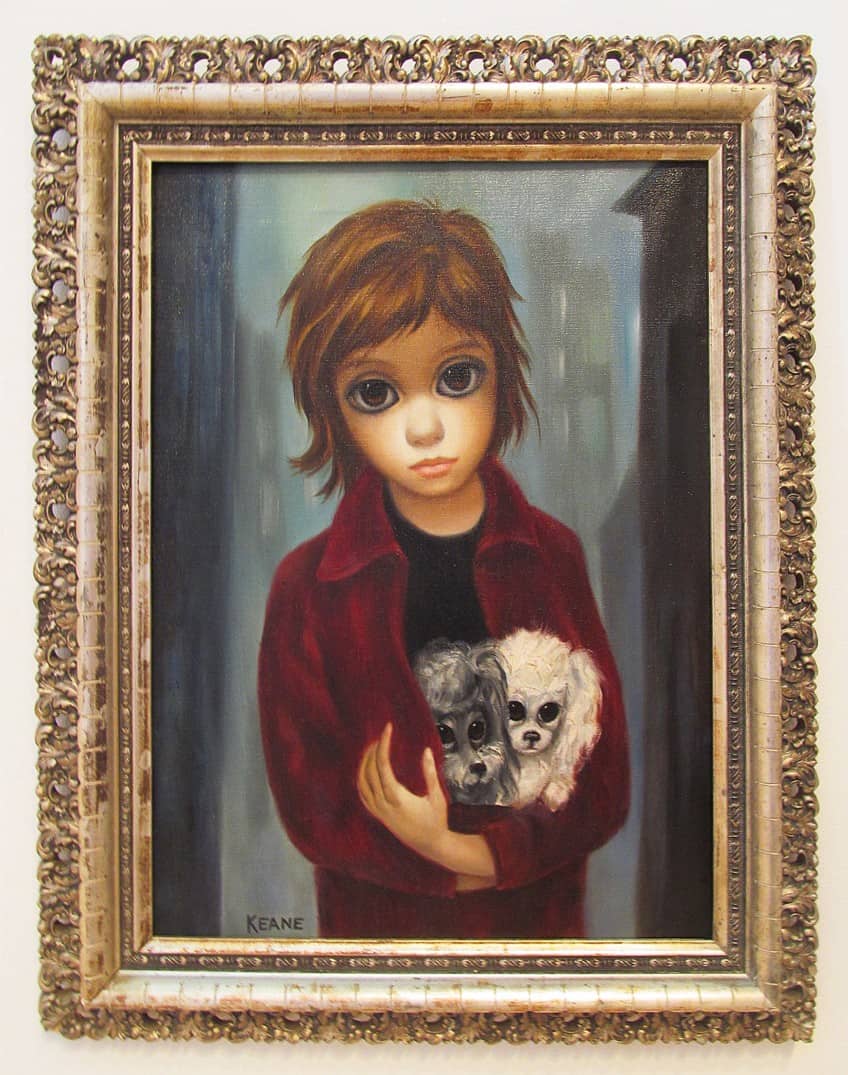
Walter was also married at that time and worked as a real estate broker and produced art on the side during the time. Yet, he later told reporters that he had retired from his “very successful real estate job” in 1947. “Suave, vivacious, and engaging”, is how he was described by Margaret Keane. They married in Honolulu in 1955.
The Walter Keane Period
Margaret Keane said that he soon started selling the signature big eye paintings by Margaret Keane, but that he said it was his own art. His main sales location was the comedy club in San Francisco known as the Hungry I. She stayed mute after discovering his deceit. “I was frightened of him since he was threatening to have me killed in if I mentioned anything to anyone”, she later recounted. She even accepted him as the painter publicly, while later stating it was “excruciating” for her. She justified the circumstance by claiming that “at least they were getting displayed to an audience”.
Walter Keane started displaying the large eye artworks as his own in 1957. The artwork was displayed on the wall of the Bank of America in Sausalito in February.
He brought nine artworks to New Orleans, claiming to have sold them during Mardi Gras. He then organized an exhibition in the Washington Square Park Outdoor Art Show that summer. Using his promotional skills, he organized an exhibit in August at Chicago’s Sheraton Hotel and yet another later that month at a smaller East Side gallery.
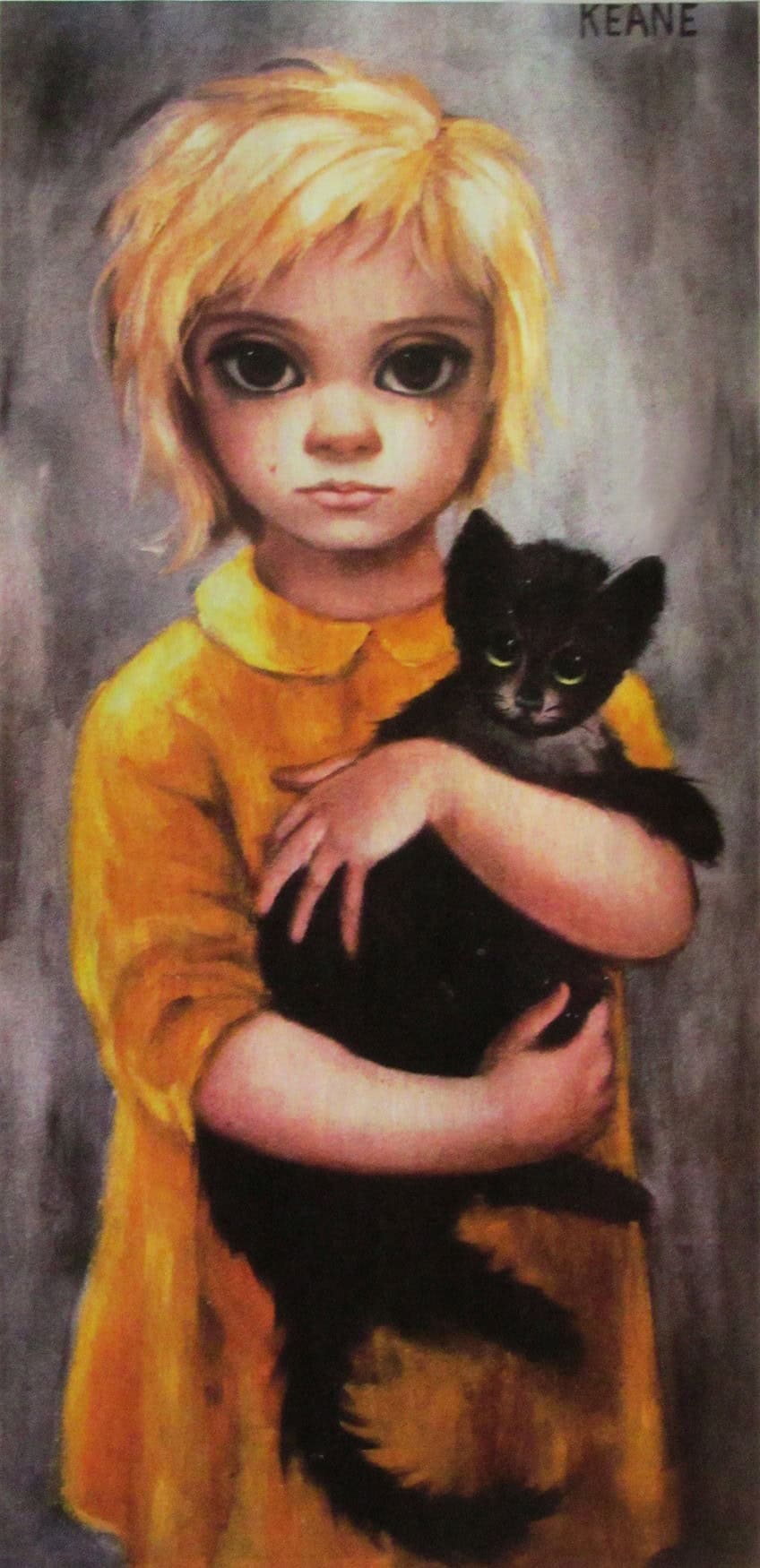
Walter began to create mythologies about himself and, to a lesser degree, Margaret Keane. He soon started promoting “The Painting Keanes”. Keane rose to prominence as one of the most famous and financially successful painters of the 1960s. According to Andy Warhol, “I believe what Keane has done is fantastic. It must be good. Many people would dislike it if it were awful”.
A big artwork commissioned for the 1965 World’s Fair depicted a parade of doe-eyed waifs marching from the horizon, where they queued up on a stairway.
John Canaday, an art critic, defined Keane as a famous painter “for producing formula drawings of wide-eyed infants with such awful tenderness that his output has become associated with unpleasant hack work among reviewers. The artwork features around 100 children and so is approximately 100 times as awful as the ordinary Keane”. Stung by the following criticism, Robert Moses stopped the artwork from being presented at the Fair.
After Walter Keane
Margaret Keane stated on a radio program in 1970 that she was the true artist of the artworks claimed by her ex-husband Walter Keane. After Margaret Keane exposed the facts, a “paint-off” between to two was held in San Francisco’s Union Square, organized by Bill Flang, a San Francisco Examiner journalist, and witnessed by the press, but Walter did not appear. In federal court in 1986, she sued both USA Today and her ex-husband for an article alleging Walter was the true painter.
The judge notoriously ordered the two to each make a big-eyed picture in the courthouse in order to ascertain who was speaking the truth. Walter rejected it because of a bad shoulder, but Margaret Keane finished her artwork in 53 minutes.
The judge awarded her $4 million in compensation after a three-week trial. Margaret Keane stated following the verdict: “I truly believe that truth has won. Even if I don’t see any of the 4 million bucks, it’s been worthwhile”. In 1990, a federal appeals court affirmed the defamation decision but reversed the $4 million damage award. Keane stated that she was unconcerned about the money and only wanted to show that she had produced the paintings. Margaret Keane’s paintings depicted sad-looking children in dismal circumstances while she was living in the shadows of her ex-husband.

She relocated to Hawaii after leaving Walter and became a Jehovah’s Witness after years of studying palmistry, astrology, handwriting analysis, meditation, and yoga; her art became brighter and livelier. “My children’s eyes are a representation of my own innermost sentiments”. “The eyes have always been regarded as the windows to the soul”, Keane said. Many galleries now promote her pieces as including “tears of happiness. These are images of children in heaven”, she said of her themes. “They are my visions of how the earth will appear when God’s plan is fulfilled”. Natalie Wood, Joan Crawford, and Jerry Lewis, among others, commissioned the artist to produce their portraits.
Tim Burton, a collector of Margaret Keane’s paintings who subsequently directed the 2014 biographical picture Big Eyes, asked the painter to create a painting of his girlfriend at the time, Lisa Marie in the 1990s.
The Prescolite Manufacturing Corporation purchased and donated Keane’s painting to the United Nations Children’s Fund in 1961. Toy designs, Susie Sad Eyes dolls, Little Miss No Name, and the animation The Powerpuff Girls have all been influenced by the big eyes paintings by Margaret Keane.
Personal Life
Frank Richard Ulbrich was Keane’s first spouse, with whom she had a child. She wedded Walter Keane in 1955. She separated from Walter in 1964, divorced him a year later, and relocated to Hawaii from San Francisco. Keane became a dedicated Jehovah’s Witness in Hawaii, where she lived for the rest of her life. She attributed her religion and Bible studies to giving her the guts to reveal the truth about her paintings. Keane met Honolulu sports reported Dan McGuire while remaining in Hawaii, marrying him in 1970.

She credited McGuire for assisting her in being less shy and fearful following her divorce from Walter. Keane resided in Hawaii for more than two and a half decades until returning to California in 1991. Her child Jane lived in Napa County, California. Keane started hospice care in 2017 while still residing in her home, at the age of 90. The increased attention she received from hospice helped her to recuperate sufficiently to “create more and relax”. She died of heart failure on the 26th of June 2022, at the age of 94, at her home in Napa, California.
Margaret Keane’s Artwork
The huge, doe-like eyes of Keane’s subjects distinguish her works. Keane stated that she was always fascinated by eyeballs and used to sketch them in her school textbooks. When she began producing pictures of youngsters, she developed her characteristic “Keane eyes”.
Style of Margaret Keane’s Paintings
“Children have large eyes. When I’m painting a portrait, the most expressive feature of a person’s face is the eyes. And they simply kept getting larger and bigger”, Keane stated. Keane concentrated on the eyes since they reveal more about the inner person. Amedeo Modigliani’s work influenced Keane’s approach to painting ladies beginning in 1959.
Gustav Klimt, Vincent van Gogh, and Pablo Picasso were among the painters who affected her in terms of color, depth, and composition.
Notwithstanding her claims to be a fine artist, she wasn’t a massive success; instead, she was “renowned for her sticky-sweet pictures of big-eyed waifs that quickly became the middlebrow fad in the late 1950s and early 1960s, then kitschy trinkets of sarcastic taste decades later”.
Notable Artworks
Now that we have taken a look at Margaret Keane’s biography and art style, we can suggest some notable examples of Margaret Keane’s paintings. These big eyes paintings by Margaret Keane all exhibit what the public loved about her work. Ironically, it also displays what critics did not like about Keane’s work.
| Artwork | Date | Medium | Dimensions (cm) | Location |
| The Stray | c. 1950 | Fine art giclee print on canvas | 61 x 30 | Keane Eyes Gallery – available online |
| 3-Eyed Jack | 1999 | Oil on board | 12 x 17 | Keane Eyes Gallery – available online |
| Overlooked | 2012 | Acrylic on canvas | 25 x 20 | Kean Eyes Gallery – available online |
| A Golden Arrangement | Unknown | Oil and gold leaf on canvas | 61 x 94 | Keane Eyes Gallery – available online |
That concludes our examination of Margaret Keane’s biography and artworks. Margaret Keane was a well-known American painter recognized for her images of toddlers with big eyes, who her ex-husband, Walter-Keane, claimed credit for until their separation. Amedeo Modigliani, according to Keane, was her greatest influence in how she depicted the feminine form, and her work may be seen as a predecessort to Yoshitomo Nara’s large-eyed animals and children.
Frequently Asked Questions
Who Is Margaret Keane?
In the 1960s and 1970s, her pictures of women, children, and animals with emotively large eyes, dubbed large-eyed waifs, achieved commercial success. Keane was first acknowledged as the creator behind her works in 1970. Until that day, her husband had claimed ownership of the whole portfolio of Margaret Keane’s paintings. Such deception led to retribution for Keane and the corpus of work she generated. Keane was born in Nashville, Tennessee in 1927, and she was drawn to painting at a young age. The wide eyes that became a trademark of her adult work appeared regularly in her childhood works as well. Keane attended art school in Tennessee and then in New York.
What Was the Story Behind Margaret Keane’s Paintings?
Margaret Keane had no idea her husband was selling off her artwork as his own until she caught him in the activity. But Walter persuaded her to continue giving him credit for her efforts, maybe because this was during a time when women were encouraged to help their spouses while keeping in the background. Keane thought that as a female painter, her art would not retail as successfully as a man would, which explains why even though Margaret Keane’s paintings were generating millions in the 1960s, she did not disclose herself as the genuine creator behind her works. She ultimately confessed that she was the true creator behind her big-eyed artworks in a radio appearance in 1970.
Isabella studied at the University of Cape Town in South Africa and graduated with a Bachelor of Arts majoring in English Literature & Language and Psychology. Throughout her undergraduate years, she took Art History as an additional subject and absolutely loved it. Building on from her art history knowledge that began in high school, art has always been a particular area of fascination for her. From learning about artworks previously unknown to her, or sharpening her existing understanding of specific works, the ability to continue learning within this interesting sphere excites her greatly.
Her focal points of interest in art history encompass profiling specific artists and art movements, as it is these areas where she is able to really dig deep into the rich narrative of the art world. Additionally, she particularly enjoys exploring the different artistic styles of the 20th century, as well as the important impact that female artists have had on the development of art history.
Learn more about Isabella Meyer and the Art in Context Team.
Cite this Article
Isabella, Meyer, “Margaret Keane – The Painter Behind the Big-Eyed Portraits.” Art in Context. October 13, 2024. URL: https://artincontext.org/margaret-keane/
Meyer, I. (2024, 13 October). Margaret Keane – The Painter Behind the Big-Eyed Portraits. Art in Context. https://artincontext.org/margaret-keane/
Meyer, Isabella. “Margaret Keane – The Painter Behind the Big-Eyed Portraits.” Art in Context, October 13, 2024. https://artincontext.org/margaret-keane/.


